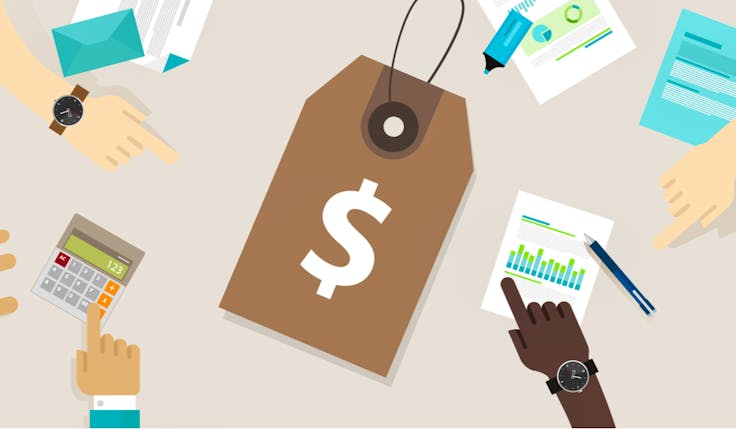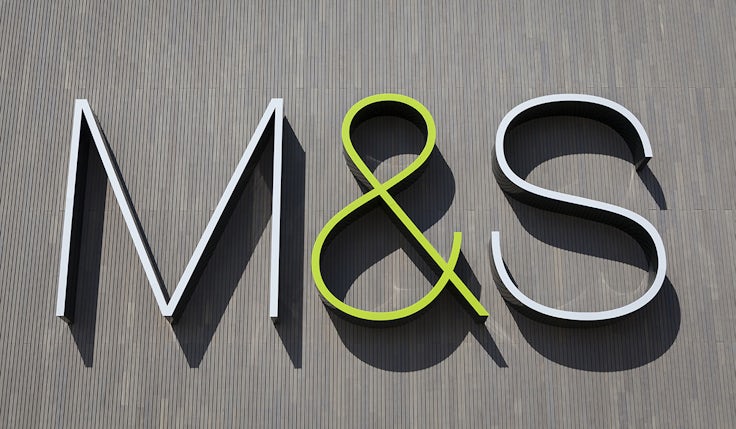The era of price-led profit growth is coming to an end
With inflation falling, brands that have used clever pricing to drive profits will need more restraint to avoid new entrants undercutting them at lower margins.

The Office for National Statistics (ONS) has a chart that captures UK inflation since the new century began. It shows CPIH – the consumer price index including home ownership costs – rising and falling. There are a couple of small hills in 2007 and 2011. Then in 2021 a giant Everest swings into view, climbing to an almost double-digit peak of annual inflation by 2022. It was the strange, inflated era that all of us have just lived through.
If you sat in on a reporting session over the last few years at any of the major FMCG companies, you inevitably learned that demand was flat or possibly slightly down, however, profits were up – and they were up thanks to price rises. Companies that had managed to bounce along with virtually no change in price for years suddenly got very adept at increasing prices as their costs of goods continued to rise. And if there is any silver lining in the recessionary angst of the last few years, it is that many organisations relearned three of the most important lessons of business as they did the hard yards of 2021 to 2024.

First, that the focus for any business should be generating profits, and not generating revenues. Sure, revenues are important, but mostly because they are the carrier drug for the crucial injection of profit that comes with it.
Second, that price is the greatest driver of profitability. Not sales growth. Not cost cutting. The famous study from Wharton that surveyed more than 2,000 different businesses found the same recurring pattern: price increases were significantly more impactful at driving up corporate profits than any other alternative.
The way a company communicates and presents its price is often far more influential on demand than the actual price itself.
Finally, companies learned that price rises, when done right, were not as painful as many might have expected – especially within the inflationary context of the last few years, where costs, prices and consumer expectations proved more fluid than usual. The decade before this one saw companies locked on a price and very uncomfortable attempting to increase it. But suddenly the last few years have seen many of these same companies realise that they could increase price and get away with it again and again.
A word on this. It is apparent to anyone involved in pricing that the way a company communicates and presents its price is often far more influential on demand than the actual price itself. Imagine a sentence in which the font is more important than the words being spelled out. That’s the best analogy for the dark arts of pricing when done properly.
How can brands drive growth in 2024?
Anchoring. Framing. Price-rise communication. Decoys. Implied scarcity. Bundling. ‘Rundling’. Loss aversion. Tiering. There are a host of ways to increase the price of your product that do not necessarily strike the consumer as costing them more. Indeed, they may make the consumer think they are better off with the deal. Such is the power of behavioural economics and the vulnerability of a consumer who does not actually think how they think they think.
At this point, you are either scratching your head at that last paragraph or smiling darkly. You either know or you don’t. Take it from me, there are many reasons why marketers should be working on pricing, but the most empowering rationale is that marketers know about customers and know how to communicate to them. And the finance department doesn’t.
Ritson’s ethnography of pricing: How and why marketers should put up prices
McDonald’s ‘decoy’ pricing
Take McDonald’s as an example, easily one of the best marketing companies in the world. And I say ‘marketing’ because, although its advertising is also world class, the company excels across the board with every aspect of its marketing approach, not just its communications. I could write columns on its research architecture, targeting, long and short approach to positioning, distinctive assets, objective setting, store location, menu design. You name it. But let’s focus on pricing and, to keep it even simpler, on how McDonald’s uses mixed-bundle decoy pricing.
If you head to your local McDonald’s tonight, you will pass the Chicken Sharebox being advertised for £9.19 as you walk in. Above the counter, you note the Big Mac for £5.09, the medium fries that will cost you £2.19 and a medium Coke for £1.99. But then, thanks to the array of LED screens, you glimpse the spectacular saving of the medium Big Mac Meal.
Value meals are a constant source of fascination for behavioural economists. They study them. They experiment with them. And, generally speaking, they point to a ‘value’ that cuts both ways: value meals signal value to consumers, but they also deliver incredible value to those selling the meals.
Anyway, back to McDonald’s, where you’ve just seen that for £6.99 you can get it all! The burger, the fries and a drink. For less than the Chicken Sharebox that came without chips or a drink. And for a saving of more than £2 compared to buying these three items separately. Before you can say “behavioural economics wins again” you are number 74, waiting patiently behind a bloke in a blue coat and seven quid lighter.
Growth is still the imperative, but getting it from brilliantly executed pricing is surely coming to an end.
What just happened is that McDonald’s anchored you with the Chicken Sharebox price, then used mixed bundling to extract more money from you, and then, by allowing you to review the items in the bundle separately, used decoy component pricing to steer you to a target bundle purchase that was more than you would otherwise have paid. And you walked out with what you thought was a great deal.
And note that all these prices are relative to each other. Because McDonald’s sells its burgers directly through its own (often licensed) restaurants, it can not only take all the margin, it can completely control how the prices are presented. Unlike selling indirectly through mass retail, every relative price point is controlled by McDonald’s.
McDonald’s has always been good at this kind of thing. But the recent developments in LED menus and widescreen, animated, on-premise advertising open up a Pandora’s value box of new opportunities to price even more cleverly, more behaviourally and more profitably.
And the results are there for all to see. McDonald’s generates around $3bn less revenue than it did a decade ago. And yet it manages to produce significantly more profit from this reduced revenue, according to Macrotrends data. To the tune of billions of dollars. This improved profitability is down to a raft of factors, but top of the list is better, smarter, higher prices presented with the kind of masterful behavioural framing that would make Dan Ariely blush.
Ritson: Five lessons on how not to do pricing from Elon Musk’s Twitter
The tables are turning
But economic cycles have a habit of, well, being cyclical. Inflation rates fall as well as rise. And the ONS data shows a descent from Everest that started about a year ago and that is now heading precipitously to the sub 2% level that the Bank of England anticipates for 2025 and beyond. And with that welcome reduction comes a challenge for big brands and the marketers who work there.
Three years ago, these brands learned to drive corporate profitability with price increases. Now they must quickly accept that the inflationary music has stopped and it’s time to get off the price-hike dancefloor, irrespective of how smooth their moves might now be. Most have already bolstered their profitability well beyond any inflationary impediment and are significantly more profitable than they once were. But they must not get greedy and keep doing it.
McDonald’s is suddenly garnering flame-grilled heat over its clever and formerly invisible pricing tactics. Not from the consumers paying these prices. They are, after all, still distracted by the smoke and mirrors of brilliant price communication. Instead, external observers are taking a step back and noting just how much prices have increased over time. And the relatively unchanging nature of McDonald’s product offer and business model make these comparisons all the more apparent and all the more uncomfortable.
The price of a Big Mac in this country, for example, has almost doubled since 2012, according to Truflation. That’s way ahead of inflation, which has only seen prices increase 40% over the same period. A recent study by FinanceBuzz found similar increases in McDonald’s prices in America. In the last 10 years, prices have gone up by 31% over there but the average menu prices at McDonald’s and a gaggle of other quick-service restaurants (QSRs) have risen between 39% and 100%. Everyone, it seems, is riding the price inflation gravy train.
Make no mistake, I am not decrying McDonald’s or any of the other brands that have been able to frame prices in such a way as to increase margins without significantly reducing demand. Instead, I doff my marketing cap to all of them. This is what they were meant to do. Markets are efficient. And good marketers that can help their companies set and then frame price effectively have proven their worth in recent years by helping to deliver growth in an environment where no growth was apparent.
But I am reminded of Gillette and its ability to dominate its category, win globally and extract eye-opening four-figure markups for its blades over the last two decades. While it was doing all that, Gillette was incredibly impressive, spectacularly profitable and apparently invulnerable to competition. But its markup became its relative downfall, as the enormous space between the cost of Gillette’s blades and their retail price first attracted, then incentivised and ultimately catalysed a raft of new entrants. These entrants would not have had any access to the category, had Gillette not priced with such vertiginous skill. Sometimes, even when you can get away with price rises in the market, you should avoid the temptation. The longer-term implications of the increases will ultimately make the move ill-advised.
That should be the message to the QSR brands who have learned to keep pushing up price. The economy is changing. Inflation is flattening. And the challenge of successfully increasing prices that so many companies met a few years ago is being replaced with the need to read the room and adjust their approach accordingly. Growth is still the imperative, but getting it from brilliantly executed pricing is surely coming to an end.
Mark Ritson is a former marketing professor, award-winning columnist and founder of the Mini MBA, which – compared to a full MBA at more than £80,000 – is incredible value at only £1,850. See what I did there?







